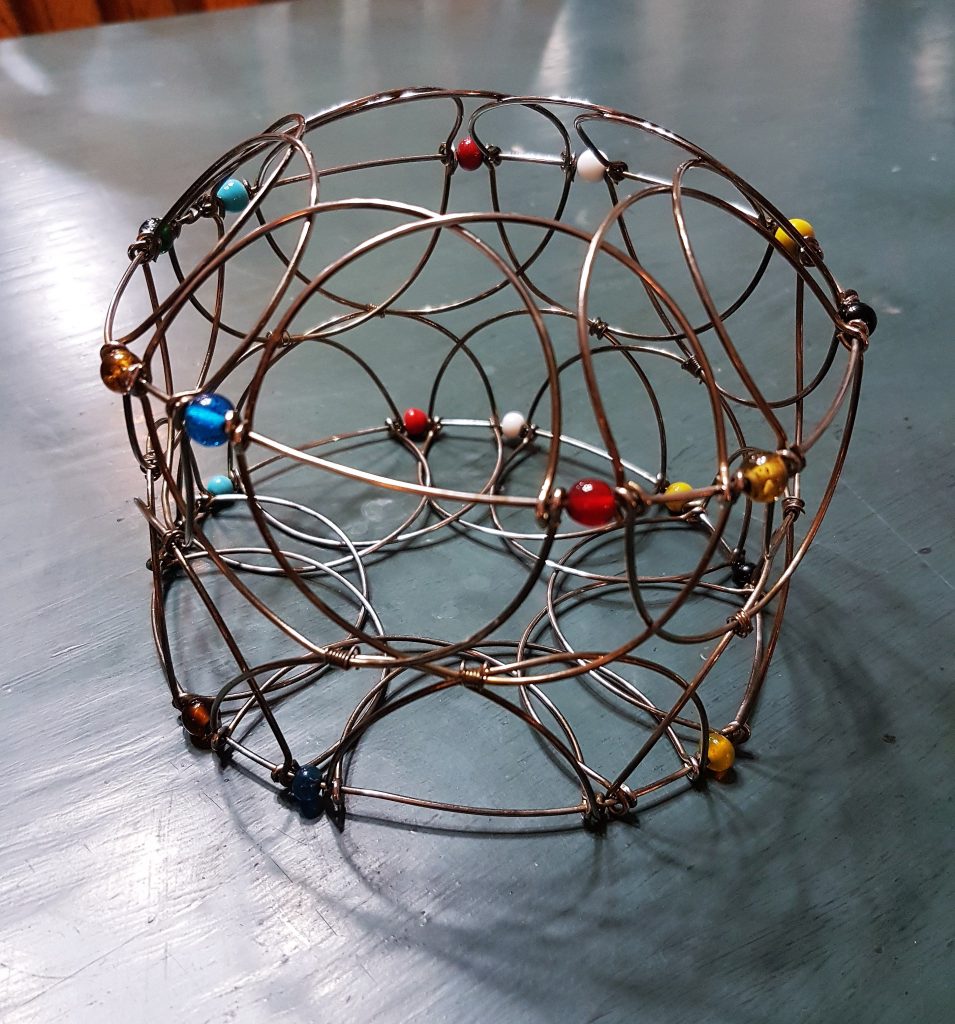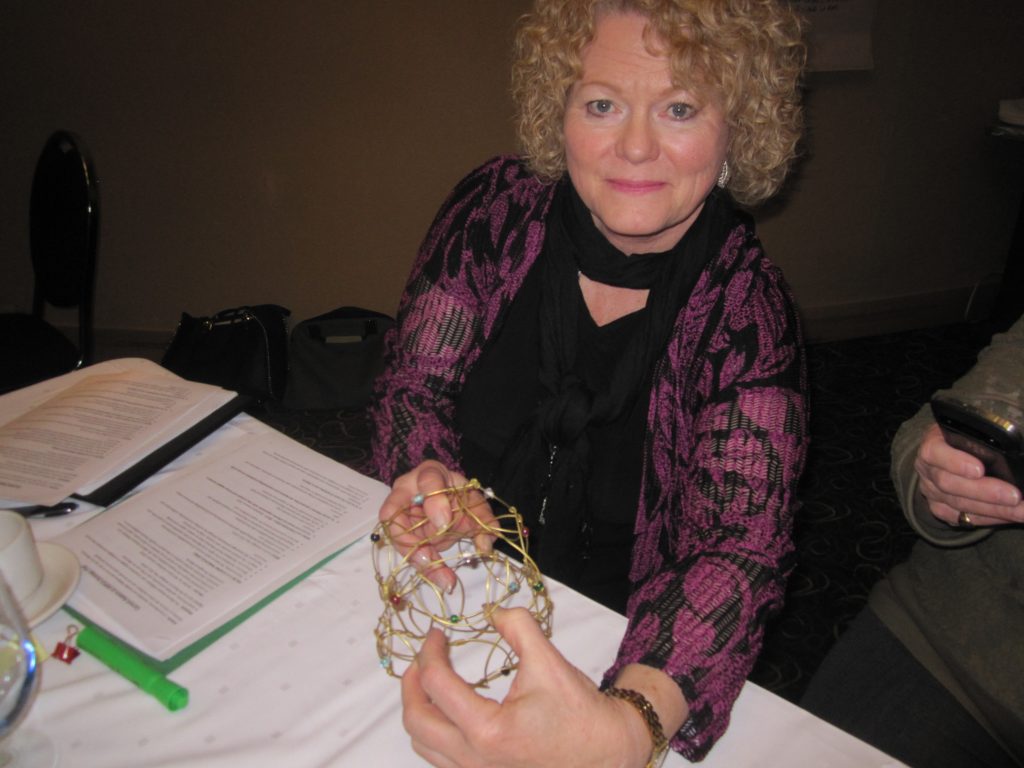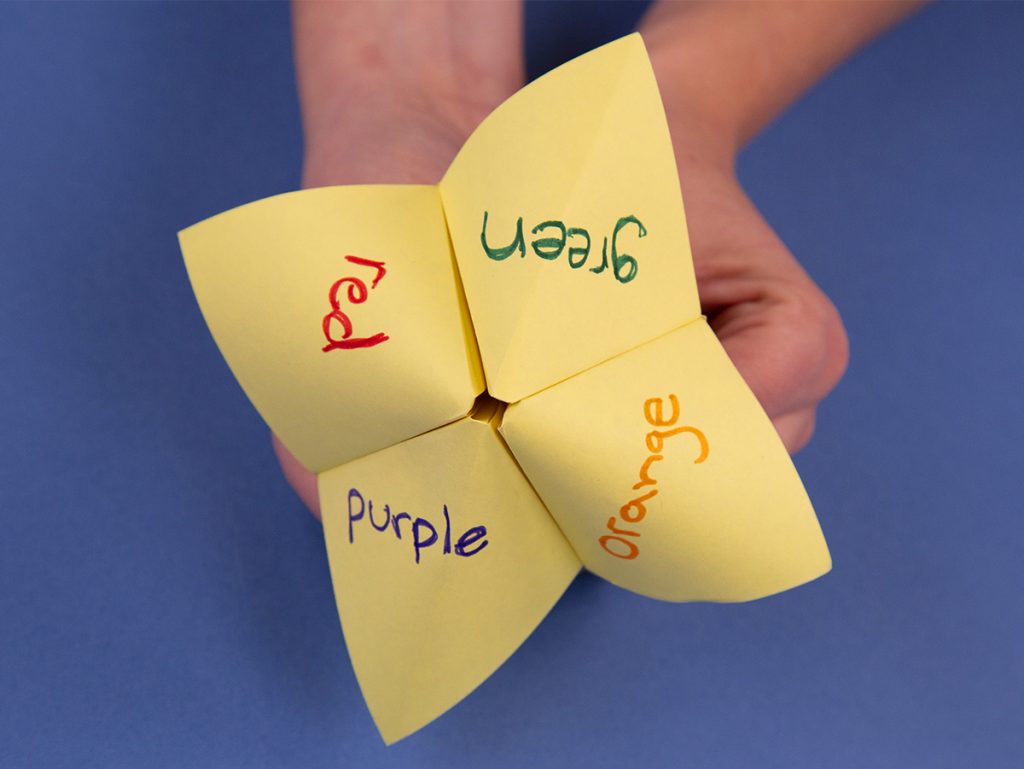“Bring them again!”
I often place these globe-like metal objects on the tables at in-person sessions I facilitate. Participants love them. Their enthusiasm inspires me to share ideas and activities about ways I use the objects as an aid to thinking, listening, and conversing.

The object is a beautiful 3-dimensional wire globe I bought from Ten Thousand Villages. It is based on the word mandala which is from the Sanskrit language and loosely means “circle” and represents “whole world” or “healing circle.” The globe is often used to focus attention and guide meditation.
https://www.worldhistory.org/mandala/
Ways to use the Globe in Facilitation
Here are a few of the ways that I use these objects to encourage conversations. Before each activity, I explain the connection of the globe with the symbolism of the mandala, describing its origin in the Sanskrit language and its use in some religions. This honours the spiritual significance that may be attached to it by individuals.
- A fun and tactile toy: At times, I simply place the globes on the tables and let participants enjoy them and benefit from changing the shape if they are tactile learners. They are fun to hold, manipulate, and move.
- A conversation creativity method: I give a globe to each participant and encourage them to play with it. We change it to represent different shapes: e.g. open and closed shapes (oceans and skies, dualities of life such as day and night, complex and simple), drum (symbolic of communication), lotus (symbolic of transformation). This helps participants think differently.
- A reflection technique: Ask the participants to make the globe into a shape that they resonate with. Ask why they chose the shape. Ask how they can apply the meaning of the shape to the topic under discussion, e.g. “I made a drum because I feel communication is important to our workplace.”
- A metaphor for change: I invite participants to change the object into different shapes, and with each shape, explain how it relates to the change that they or their organization may be considering. This discussion can last 15 minutes to several hours.
- An emotional outlet: I invite participants to shape the globe to show their emotions about a topic or the status of the discussion, e.g. an open shape to convey interest or enthusiasm, a flat shape to convey concern or disinterest.

Adapting for online (virtual) sessions
The benefit of the object is the manual feel and movement. While difficult to duplicate online, it is possible to create a similar experience. Ideas:
- Invite participants to bring a similar object to hold and move. Facilitate conversations as outlined above
- Mail or email each participant the instructions for an Origami Fortune Teller. They can create the 3-dimensional paper object and then move it into shapes. also, if you cannot find the objects to buy, use the Fortune Teller paper option in your in-person sessions.

https://www.dltk-kids.com/world/japan/pfortune-teller.asp
If you are interested in more ways to use the wire globe in facilitation, please contact me for resources and ideas.
